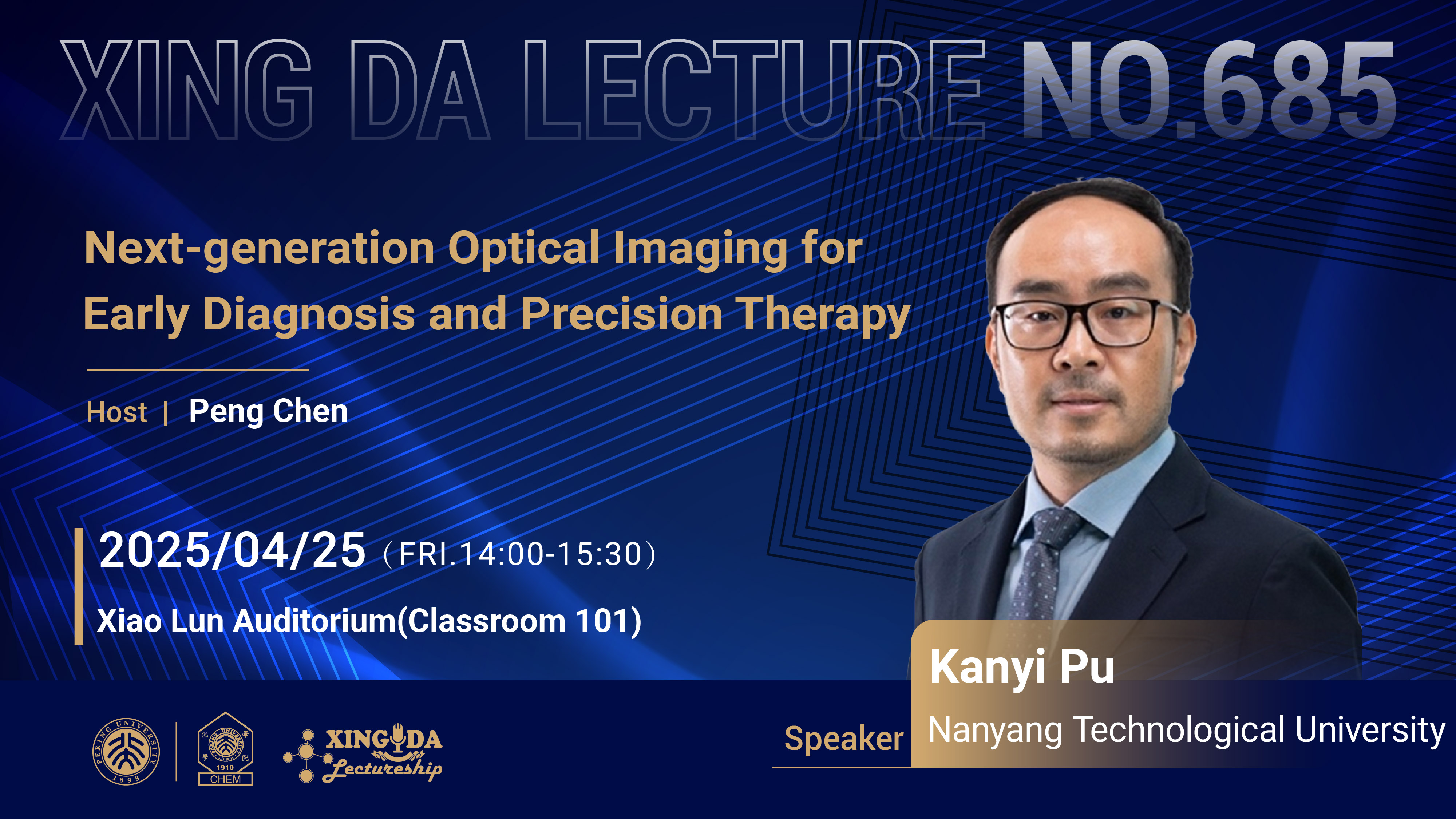
Abstract
Molecular optical imaging plays a crucial role in biology and medicine. However, the strong tissue autofluorescence and shallow tissue penetration of optical imaging compromise not only its sensitivity and specificity but also limit its clinical translation. In this talk, I will introduce our approaches (molecular afterglow imaging and artificial urinary biomarkers) to tackle these challenges. First, I will introduce molecular afterglow probes with long-lasting luminescence after cessation of electromagnetic irradiation by light, ultrasound, or X-ray. Due to the elimination of real-time light excitation, molecular afterglow probes have a signal-to-background ratio more than two orders of magnitude higher than NIR fluorescence, allowing for sensitive detection of tiny peritoneal metastatic tumors and monitoring therapeutic outcomes. Second, I will discuss how to design renal-clearable optical probes as artificial urinary biomarkers (AUBs) for the early diagnosis of acute kidney injury and allograft rejection as well as the profiling of tumor immune microenviroment. AUBs can specifically activate their optical signals toward the biomarkers of interest, followed by rapid renal clearance for urine tests. They can thus act as artificial urinary biomarkers to bypass the tissue penetration issue of optical imaging, permitting optical urinalysis that outperforms typical clinical/preclinical assays. These studies provide the basis for an entirely new class of molecular optical probes with ultrahigh sensitivity and high translational potential for early diagnosis and precision medicine.
Biography
Prof. Kanyi Pu is a President’s Chair Professor at the School of Chemistry, Chemical Engineering and Biotechnology (CCEB) and Lee Kong Chian School of Medicine at Nanyang Technological University (NTU). Additionally, he is the executive editor for the Journal of the American Chemical Society and a fellow of the American Institute for Medical and Biological Engineering (AIMBE). With a h-index of 123, he has been acknowledged as one of the world's most influential researchers by Web of Science in the fields of both chemistry and materials science, and received esteemed awards, including the Singapore National Research Foundation (NRF) Investigatorship and the Biomaterials Science Lectureship Award. He also acts as an editorial advisory board member for over 18 renowned journals, including Chemical Society Reviews, Advanced Functional Materials, Biomaterials, Small, and Bioconjugate Chemistry.